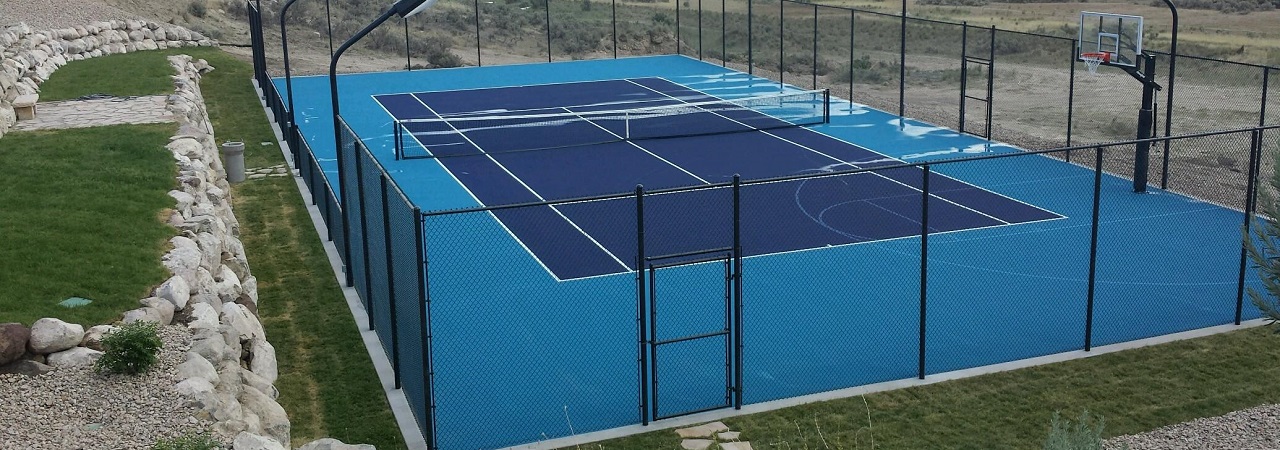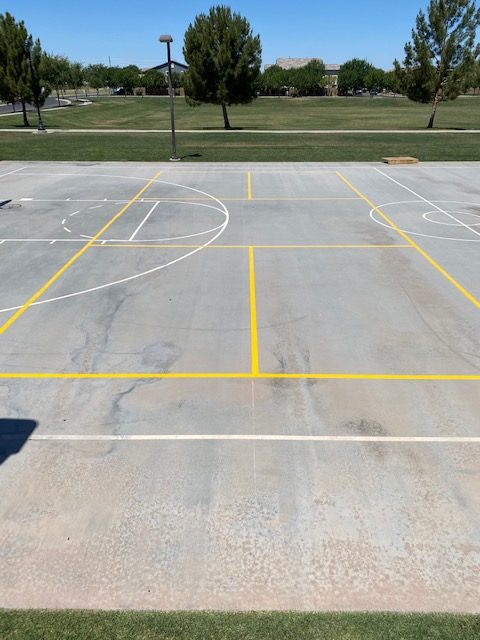A Comprehensive Guide to Creating the Perfect Pickleball Court for All Ability Levels
Designing a pickleball court that provides to gamers of varying ability degrees necessitates a diverse approach, including important aspects such as court measurements, surface materials, and access functions. The equilibrium between performance and safety is critical, as is the development of a welcoming atmosphere for both participants and spectators. With the ideal design choices, one can cultivate an appealing atmosphere that promotes pleasure and ability development. Pickleball court contractor. The details entailed in achieving this equilibrium are usually overlooked. What particular considerations must be prioritized to guarantee an effective application?

Understanding Court Dimensions
Understanding the measurements of a pickleball court is vital for both gamers and designers, as these specifications make certain a regular and fair having fun experience. A typical pickleball court determines 20 feet broad by 44 feet long for both singles and increases play. The court is split right into 2 equivalent fifty percents by a web that stands 36 inches high at the sidelines and 34 inches at the center.
Key features of the court consist of the non-volley area, frequently referred to as the "kitchen area," which extends 7 feet from the web on both sides. This area is vital for managing gamer motion and volleying, ensuring tactical play. Additionally, the service locations on each side of the court are vital, gauging 10 feet broad and 15 feet deep, made to accommodate correct serving methods.
Bordering the court, an area of at least 10 feet need to be designated as the security area, allowing gamers enough space to relocate and protect against injuries during play. Following these measurements not only promotes reasonable competitors but also advertises safety and security and enjoyment for all participants, making it essential for any pickleball court style.
Picking the Right Surface Area
The choice of playing surface for a pickleball court dramatically affects the game's dynamics and player experience. Choosing the ideal material is important for making certain player performance, comfort, and safety. Common surface areas consist of asphalt, concrete, and specialized sporting activities floor covering.
Asphalt is a preferred selection as a result of its price and resilience. It offers a consistent playing surface but can be hard on joints over extended play. Concrete, while comparable in toughness, provides minimal flexibility, potentially causing boosted influence on players' bodies.
For a more supported experience, several centers select specialized sports floor covering, such as modular floor tiles or synthetic surfaces. These materials often consist of shock-absorbing homes, decreasing the risk of injuries and boosting gamer comfort. Furthermore, such surface areas can enhance ball bounce uniformity, which is vital for reasonable play.
When selecting a surface area, think about factors such as environment, maintenance needs, and the intensity of play. An appropriate surface area not only improves gameplay but additionally adds to the long life of the court itself. Eventually, understanding the subtleties of different products will certainly help in developing an ideal pickleball environment tailored to numerous ability levels.
Ideal Court Layout
An optimum court design is essential for taking full advantage of both gamer performance and viewer enjoyment in pickleball. The measurements of a basic pickleball court are 20 feet vast by 44 feet long for doubles play, keeping a clear boundary that boosts gameplay. The net, placed at 36 inches high at the sidelines and 34 inches in the center, is vital for preserving the dynamics of the video game.
Integrating designated locations around the court for players to relocate freely is crucial. A minimum of 10 feet of clearance on all sides of the court is advised to stop crashes and provide space for viewers. Additionally, alignment plays a considerable duty; the court ought to preferably be straightened north-south to reduce the influence of sun glow on players throughout peak hours.
Reliable spectator placement is similarly vital. Elevated seeing bleachers or locations placed behind the sidelines can boost the experience while ensuring safety. Visible and clear court markings aid in gameplay, with contrasting colors for boundaries and non-volley zones that mark essential locations for gamers. Generally, a properly designed court format cultivates an interesting environment for both gamers and viewers.

Accessibility Factors To Consider
When developing a pickleball court, making certain ease of access for all gamers, including those with handicaps, is vital. A thoughtfully created court can foster inclusivity and motivate engagement from individuals of varying capacities.

Accessibility paths to the court have to additionally be meticulously intended. Make certain that paths leading to the court are wide sufficient for mobility device customers and imp source are outfitted with ramps where essential. Signs must be clear and huge sufficient to be quickly reviewed.
In addition, seating locations need to be made to enable simple access to and from the court. This includes offering designated rooms for viewers that might have flexibility obstacles.
Last but not least, make certain that toilet centers neighboring satisfy access criteria. By considering these aspects, you can produce a pickleball court that is welcoming and useful for every person, therefore advertising a diverse and dynamic area of gamers.
Maintenance and Upkeep
Correct maintenance and upkeep of a pickleball court are crucial for making certain optimum having fun conditions and prolonging the life-span of the facility. Normal assessments should be performed to determine and more helpful hints resolve any type of problems or use, such as cracks in the surface area or loose netting. These problems, if left ignored, can negatively affect gameplay and safety.
Surface area upkeep is important; courts should be cleaned up frequently to eliminate particles, leaves, or dirt that can influence traction. For difficult courts, periodic pressure cleaning is recommended to preserve surface stability and aesthetic appeals. If your court is constructed from softer materials, such as asphalt, resurfacing or securing may be needed to protect versus weather-related wear.
In addition, web elevation and tension must be examined on a regular basis, as inappropriate settings can modify gameplay. Preserving bordering areas, consisting of secure fencing and lighting, is similarly vital for guaranteeing a risk-free and delightful environment.
Final Thought
To conclude, the design of an optimal pickleball court demands a meticulous technique that incorporates proper dimensions, appropriate surface area materials, and thoughtful design. Pickleball court contractor. Guaranteeing availability for all spectators and players is important for promoting an inclusive environment. Normal upkeep is critical for maintaining court top quality and safety and security. By sticking to these guidelines, the ideal pickleball court can be produced, promoting enjoyment and sports growth for gamers of varying skill degrees.
Designing a pickleball court that provides to players of varying ability levels necessitates a complex technique, including essential components such as court dimensions, surface products, and ease of access features.Recognizing the dimensions of a pickleball court is crucial for both gamers and designers, as these specifications make certain a constant and fair having fun experience.The option of playing surface for a pickleball court dramatically influences the video game's dynamics and gamer experience.An ideal court format is necessary for making the most of both gamer efficiency and spectator pleasure in pickleball. By adhering to visit homepage these standards, the best pickleball court can be produced, advertising pleasure and sports development for gamers of differing skill degrees.
Comments on “Picking the Right Pickleball Court Contractor: Trick Aspects to Take Into Consideration for Ideal Outcomes”